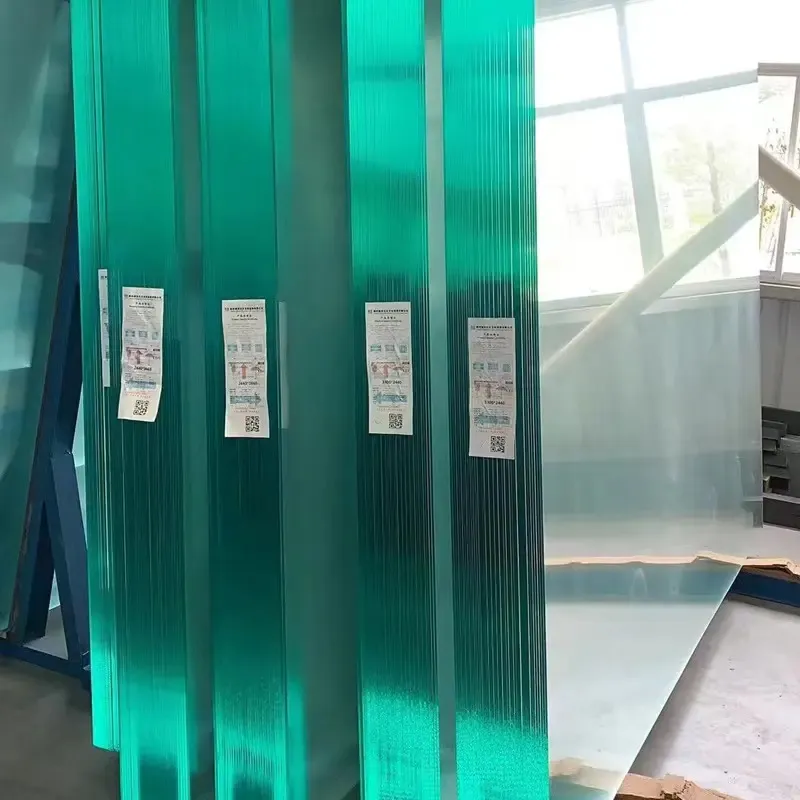Understanding the price dynamics of tempered glass, especially the 1/4 inch variant, is vital for professionals in the construction and interior design industry. Tempered glass, known for its strength and safety features, is an integral material in modern architecture. With its widespread application in windows, doors, partitions, and facades, knowing its cost implications per square foot is crucial for budgeting and project planning.

Tempered glass undergoes a thermal treatment enhancing its durability, making it four to five times stronger than standard glass. This process not only adds to its strength but also makes it safer, as it shatters into small, blunt pieces rather than sharp shards. This safety feature is particularly crucial for applications in high-traffic or vulnerable areas like schools, offices, and homes with children.
When exploring the pricing of 1/4 inch tempered glass, several factors come into play. Market conditions, raw material costs, and the complexity of installation can significantly influence price per square foot. As of recent data,
the approximate price for 1/4 inch tempered glass ranges between $12 to $20 per square foot. However, this range can vary based on geographic location, supplier pricing strategies, and bulk purchase discounts.

A deeper dive into the cost structure reveals that raw material costs and energy consumption during the production process are primary contributors to the price. Manufacturers often need to import raw materials, and fluctuating fuel prices can affect transportation costs, directly impacting the final price. Moreover, the precision required in cutting and finishing tempered glass also adds to the expense, as it demands skilled labor and sophisticated machinery.
1 4 tempered glass price per square foot
Installation costs are another pivotal aspect. Proper installation ensures the glass's maximum efficacy in terms of safety and longevity. Depending on the installation complexity—whether it involves standard window fitting or intricate custom designs—the labor costs can vary significantly. It's essential to factor in the expertise level of the installers, as improper installation can compromise the glass's strength and safety attributes.
Customers often inquire about the return on investment with tempered glass. Given its durability, reduced maintenance needs, and enhanced safety features, tempered glass offers long-term cost-effectiveness. Its ability to withstand environmental stressors like wind and thermal changes makes it a preferred choice for external applications, where durability is non-negotiable. Furthermore, its aesthetic appeal, with options for various tints and finishes, adds value to any property, making it an attractive feature for potential buyers or tenants.
Sustainability is another vital consideration in today's environmentally conscious market. Tempered glass is recyclable, and its production process is increasingly incorporating eco-friendly practices. Many manufacturers are committing to reducing carbon emissions and energy consumption, aligning with global sustainability goals. Choosing suppliers who emphasize green practices not only benefits the environment but also appeals to a growing segment of eco-conscious consumers.
In summary, the pricing of 1/4 inch tempered glass per square foot is influenced by a multifaceted array of factors. For architects, builders, and consumers, understanding these variables is key to making informed decisions that balance cost, functionality, and environmental impact. By partnering with reputable suppliers and skilled installers, stakeholders can ensure that their projects benefit from the safety, durability, and aesthetic advantages that tempered glass provides, ultimately achieving a product that stands the test of time both structurally and stylistically.
 Afrikaans
Afrikaans  Albanian
Albanian  Amharic
Amharic  Arabic
Arabic  Armenian
Armenian  Azerbaijani
Azerbaijani  Basque
Basque  Belarusian
Belarusian  Bengali
Bengali  Bosnian
Bosnian  Bulgarian
Bulgarian  Catalan
Catalan  Cebuano
Cebuano  Corsican
Corsican  Croatian
Croatian  Czech
Czech  Danish
Danish  Dutch
Dutch  English
English  Esperanto
Esperanto  Estonian
Estonian  Finnish
Finnish  French
French  Frisian
Frisian  Galician
Galician  Georgian
Georgian  German
German  Greek
Greek  Gujarati
Gujarati  Haitian Creole
Haitian Creole  hausa
hausa  hawaiian
hawaiian  Hebrew
Hebrew  Hindi
Hindi  Miao
Miao  Hungarian
Hungarian  Icelandic
Icelandic  igbo
igbo  Indonesian
Indonesian  irish
irish  Italian
Italian  Japanese
Japanese  Javanese
Javanese  Kannada
Kannada  kazakh
kazakh  Khmer
Khmer  Rwandese
Rwandese  Korean
Korean  Kurdish
Kurdish  Kyrgyz
Kyrgyz  Lao
Lao  Latin
Latin  Latvian
Latvian  Lithuanian
Lithuanian  Luxembourgish
Luxembourgish  Macedonian
Macedonian  Malgashi
Malgashi  Malay
Malay  Malayalam
Malayalam  Maltese
Maltese  Maori
Maori  Marathi
Marathi  Mongolian
Mongolian  Myanmar
Myanmar  Nepali
Nepali  Norwegian
Norwegian  Norwegian
Norwegian  Occitan
Occitan  Pashto
Pashto  Persian
Persian  Polish
Polish  Portuguese
Portuguese  Punjabi
Punjabi  Romanian
Romanian  Russian
Russian  Samoan
Samoan  Scottish Gaelic
Scottish Gaelic  Serbian
Serbian  Sesotho
Sesotho  Shona
Shona  Sindhi
Sindhi  Sinhala
Sinhala  Slovak
Slovak  Slovenian
Slovenian  Somali
Somali  Spanish
Spanish  Sundanese
Sundanese  Swahili
Swahili  Swedish
Swedish  Tagalog
Tagalog  Tajik
Tajik  Tamil
Tamil  Tatar
Tatar  Telugu
Telugu  Thai
Thai  Turkish
Turkish  Turkmen
Turkmen  Ukrainian
Ukrainian  Urdu
Urdu  Uighur
Uighur  Uzbek
Uzbek  Vietnamese
Vietnamese  Welsh
Welsh  Bantu
Bantu  Yiddish
Yiddish  Yoruba
Yoruba  Zulu
Zulu 


